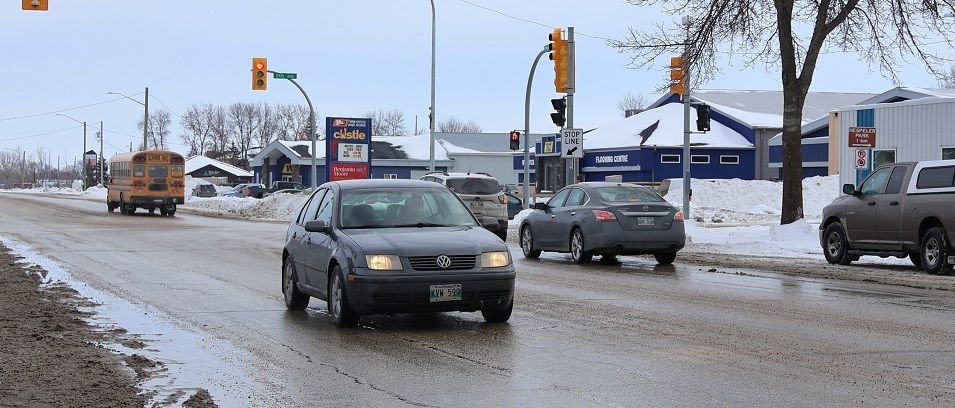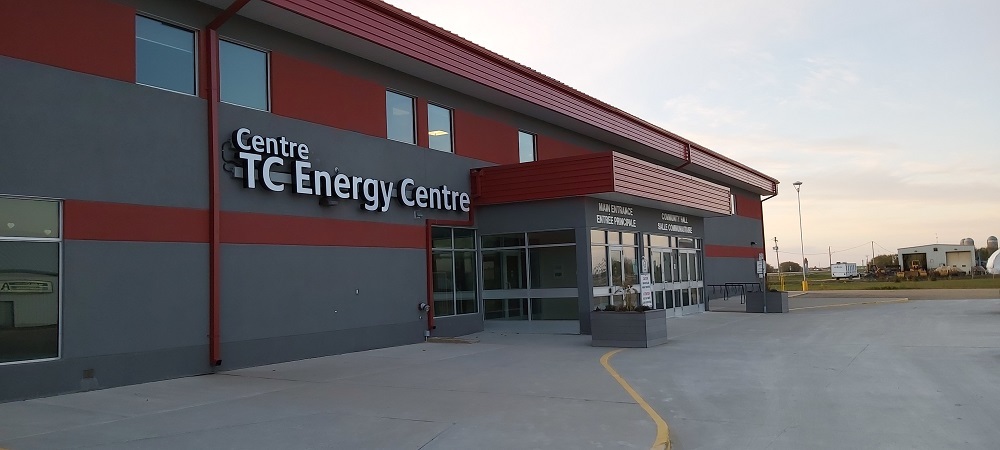
As we hit the roadways on our way from here to there, the transgressions of our fellow drivers all too frequently give us cause to utter some under-the-breath rebuke. If perception is reality, one would wonder why a driving refresher course isn’t a mandatory part of renewing one’s license.
In an effort to re-educate us all on the laws of the road in Manitoba, focusing on some of the most common traffic mistakes, The Citizen reached out to Mark Hume, Unit Commander of the RCMP’s Traffic Services.
Note that these are made-for-Manitoba traffic laws that may or may not apply in other provinces or countries.
Headlights Versus Daytime Running Lights
In Canada, it is illegal to drive at any time of day without turning on your daytime running lights (DRL). Virtually all vehicles these days are equipped with automatic DRL when the ignition is in the on position.
Running lights are located at the front of the vehicle and provide an extra level of visibility to make other drivers more aware of your presence on the road. The DRL system, however, doesn’t include lights at the rear. So they are only really effective during daylight hours and in prime driving conditions.
While some vehicles have sensors which automate the main headlight system, many do not, and in these situations drivers need to be conscientious about headlight use in order to help make the roadways safer for everyone.
According to Hume, full headlights must be employed at least 30 minutes prior to sunset. In the early morning hours, they should be left on until 30 minutes following the sunrise.
There’s a difference, though, between sunset and dusk according to provincial law.
“[Sunset] is a lot earlier than dusk,” says Hume. “You have to have your lights on a long time before it starts to get dark.”
And when it comes to daytime visibility concerns, such as fog or blowing snow, Hume says that there are laws about full headlight use there too.
“At any time when there is not sufficient [visibility] that a person standing on the highway would be clearly seen at 150 meters, then you’re required to use your headlights.”
If you’re unsure, it never hurts to err on the side of headlight use.
If you’re a driver who gets regularly annoyed by the excessive brightness of oncoming headlights, Hume says there are fewer laws enforcing those. Most headlights are CSA-approved for use, and thus legal.
Any vehicle, though, is restricted to only using four headlights at a time. Apart from agricultural vehicles, excessive after-market lights on most vehicles aren’t legal for use while driving.
Cell Phone Use
There’s been much education in the past couple of years reminding us that the only way to safely use a cell phone while driving is if it’s hands-free.
Indeed, according to Manitoba’s highway traffic law handbook, the term “use” refers to even holding a cell phone in your hand. Touching the cell phone with your finger in order to dial, text, or change your GPS location, even while it’s in a dash mount, means you are technically using it.
“You cannot use an electronic handheld device at all while you’re driving, which includes while you’re stopped and in the care of the vehicle,” Hume says. “But there’s an exception to that—if you’re pulled off the roadway.”
The roadway is defined as the travel lanes of a street or highway, but it also includes traffic flow areas within a parking lot or the drive-thru of a fast food restaurant.
So the only legal way to touch your handheld device while in your vehicle is to pull safely onto the shoulder of a highway, into a parking spot, or onto a private drive.
The only exception to this rule, Hume says, is when making a call to 911.
Passing Stopped Vehicles
There may, perhaps, be no greater frustration to motorists than those highway drivers who insist on making a right-hand pass around a vehicle which is stopped and waiting to make a left-hand turn.
“You cannot pass if you have to leave the travel lane,” Hume states. “You can’t pass on a shoulder, whether it’s paved or not.”
Pulling out to pass in the middle of an intersection, he adds, is illegal under any circumstances.
For many, this may seem like common sense. But given the frequency of the misdemeanour, it’s not.
Passing stopped vehicles on the right shoulder puts everyone at risk, including oncoming traffic that may be making a left turn and crossing the path in front of you. It also poses an immediate risk to traffic behind you that may not have the ability to stop in time if you make a sudden exit out of traffic.
Passing School Buses
In this day and age, it seems tragic that we even need to ask this question: is it ever safe to pass a school bus when the bus’s warning systems are activated? The answer in almost every circumstance is a hard and fast no!
There is one exception to the rule. You do not need to stop if you’re travelling on a divided roadway and the school bus is stopped on the opposite side of the roadway.
When stopping for a bus with its warning lights on, you must come to a full stop at least five meters from the bus, regardless of whether you approach from the front or rear.
If a school bus is pulled over but the warning lights have not been deployed, it’s a good rule of thumb to slow your speed to a crawl and pass with extreme caution.
For the love of all children, please practice extra vigilance any time you operate a motor vehicle with kids nearby.
Passing Stopped Tow Trucks or Emergency Vehicles
Common sense should rule again when it comes to safely passing tow trucks and emergency vehicles which are stopped at the side of a roadway.
According to traffic law, you must slow down while passing them. If the posted speed limit is 80 kilometres per hour or higher, traffic should slow to 60. If the posted speed limit is under 80 kilometres per hour, traffic needs to slow to 40.
Taking a wide berth around the vehicle is also a legal requirement in some conditions. But even if there’s room to do so, vehicles must still reduce their speed.
“If there’s more than one lane going in the same direction, you need to pull to the farthest lane,” says Hume. “If it’s a two-way, with only one lane in each direction, it’s just whatever is safe. It’s kind of a judgment call… If you’re going to cause a danger to anyone, you need to stop and wait until it’s safe to pull out and pass.”
Of course, specific laws also apply when responding to an emergency vehicle which is travelling with its flashing lights engaged.
In all circumstances, whether city or highway driving, the key is to move your vehicle as far to the right as safely possible in order to create an opening to your left for the emergency vehicle to pass.
This holds true for traffic driving in both directions when there’s no median to separate them.
For example, a flashing emergency vehicle travelling north along a two-lane highway should expect traffic travelling both north and south to clear the roadway until they’re safely through, creating a full two lanes of clear pathway.
“You’re more likely to see an emergency vehicle coming at you from behind,” says Hume. “So if the people in both directions pull over, then we can get around anyone that doesn’t see us.”
Urban streets follow the same rule of thumb.
If you are approaching an intersection, though, and you spot flashing lights, do not enter the intersection, even on a green light.
The only vehicles allowed to enter an intersection when an emergency vehicle is coming are those that need to in order to free a lane for access, and that’s true even if the light is red.
Left-Hand Turns at Median Intersections
Imagine you’re in the left lane of a four-lane highway with a median next to you. You’re about to make a left-hand turn onto a side road and you pull into the median opening. You stop and check for oncoming traffic.
As you do, so you ask yourself, “Should I keep to the far right or far left of the median opening?”
If you answered left, you’d be wrong, just like many motorists who make this mistake every single day.
According to Hume, keeping to the far right side of the median opening not only lines you up with the side of the road you’re about to pull onto, but it also provides optimal visibility of oncoming traffic whose lane you’re about to pass over.
If two cars coming from opposite directions enter the median at the same time and both take the incorrect left side, both cars will effectively block the other’s view of oncoming traffic.
The right-side approach is also correct in the case of making a U-turn.
Two-Way and Four-Way Stops
Most motorists recognize that two-way and four-way stop sign intersections require driver courtesy.
The driver who reaches a full stop first should be the first to gain the right of way. When two vehicles stop simultaneously, the driver on the right has the right of way. A simple wave to allow another driver to proceed is always appreciated.
In the case of a two-way stop, when drivers facing each other come to a stop at the same time, the person making a left turn must always yield to the person going straight.
Yields and Merge Lanes
When rounding a curve or off-ramp to enter into traffic on another roadway, it’s important to note that some yields lead to merge lanes while others do not.
A merge lane, or acceleration lane, is a short stretch of lane that allows merging traffic to pick up their speed in order to merge into traffic more safely. Merge lanes almost always occur in situations with high-traffic volume and higher speed limits.
In situations with low-traffic volume and lower speed limits, merging traffic is often required to stop at the end of the yield and wait for traffic to subside before entering.
The frustration for many commuters is when drivers stop and wait at the end of the yield even when an open merge lane lies before them. Traffic becomes backed up around the curve and merging becomes difficult.
Transporting Alcohol and Cannabis
If you’re transporting an alcoholic product and trying to figure out where to store it, it’s important to understand the difference between “open liquor” and “closed liquor.”
Open liquor suggests that the seal of a container has been broken. Any open liquor must be stored in a vehicle’s cargo area, such as the trunk of a car or at the very rear of a van or SUV.
Closed liquor can be carried in the passenger area of the vehicle.
According to traffic law, a case of beer is considered to be open when the seal of the box has been broken, even if every can inside is still sealed.
This is also true for beer or coolers held with plastic six-pack rings. Once one can has been removed from the ring, it is considered open liquor.
“If you buy one individual king can of beer, that beer can be in the front because it’s not open,” Hume says. “You can have it on your lap if it’s sealed.”
Cannabis does not follow the same rule as alcohol. There are no circumstances in which cannabis can be stored in the passenger area of a vehicle, sealed or otherwise. It must always be stored in the cargo area.
“Paraphernalia itself is not illegal,” he says. “But if there’s any drugs left in them, they shouldn’t be in the front seat. I’m not saying someone’s going to get charged for having residue [nearby], but technically it’s illegal.”
When testing drivers for alcohol consumption, anything below point-zero-eight (80 milligrams of alcohol in 100 millilitres of blood) is still considered safe. Hitting point-zero-eight, though, is over the legal limit.
“There’s a new law since December of 2018 called mandatory alcohol screening, so we can test every single driver without having to have any suspicion at all,” says Hume. “It’s a criminal [offence to] refuse it. It’s the same or worse than failing [a Breathalyzer test).”
Vehicles Not Legally Allowed on Roadways
Not every motorized vehicle has the legal right to drive on roadways, even in small-town Manitoba.
Hume says that only vehicles with license plates registered by an auto insurer are acceptable. The only exceptions to this rule are agricultural or infrastructure vehicles and equipment.
Examples of vehicles that should never be on the roadway include golfcarts, lawnmowers, and forklifts, which must be trailered to get from points A to B.
Drivers of golfcarts can, however, be charged with impaired driving even on the golf course, since they are operating a motorized vehicle.
Private snow-clearing equipment, Hume adds, are usually treated with some leniency if the equipment is simply moving from driveway to driveway to perform a service.
Barefoot Driving and Feet on the Dashboard
Hume says it’s an urban myth that barefoot driving is illegal in Manitoba. That has never been the case.
There are no laws, either, to prevent a passenger from reclining with their feet on the dashboard. According to Hume, though, there probably should be.
“It’s totally legal, but it’s a horrible idea. I have seen what happens to people when they’re in a head-on collision like that. Your feet will be behind your head when you’re done. I’ve seen people killed like that.”
Hume says that airbags deserve a huge amount of respect—and how you position yourself in front of them is crucial.
“I took an airbag out of a car, put a cinder block on it, and from a distance set the airbag off,” Hume says. “It blew the cinder block [higher than] a two-storey house… That’s the force that’s coming out [of an airbag]. That’s why kids need to be in the backseat, because if that hits a small child it’ll kill them.”



















